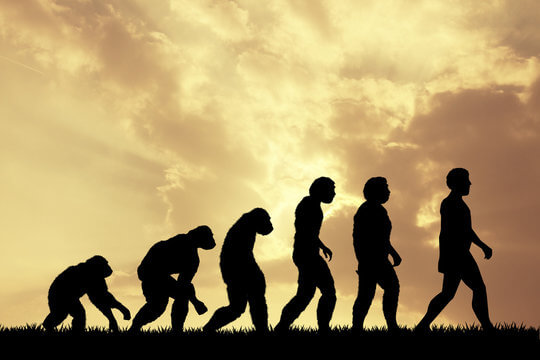
Project On Human Evolution For 10th Class
Acknowledgment
Embarking on this journey through the expansive realms of human evolution has been an intellectually enriching and deeply gratifying endeavor. This project has been shaped by the collaboration, support, and inspiration of many individuals, and we extend our heartfelt acknowledgment to those who have contributed to its realization.
First and foremost, we express our gratitude to the pioneers in the field of paleontology, anthropology, and related disciplines whose groundbreaking research laid the foundation for our exploration. Their dedication to unraveling the mysteries of our evolutionary past has been an enduring source of inspiration.
We extend our sincere appreciation to the researchers, scientists, and educators whose work has been cited in this project. Their valuable contributions have provided the framework for our understanding of human evolution, and we are indebted to their scholarship.
Our thanks go to the academic institutions and libraries that have provided access to a wealth of resources, enabling us to delve into the depth of knowledge essential for this project. The commitment of these institutions to the pursuit of learning has been instrumental in the development of this work.
Special recognition is reserved for our mentors and advisors, whose guidance, expertise, and unwavering support have been instrumental throughout the project. Their insights and encouragement have been invaluable in shaping the content and structure of our exploration.
To our peers and colleagues who have engaged in discussions, shared insights, and provided constructive feedback, we extend our appreciation. The collaborative spirit fostered by these interactions has undoubtedly enriched the depth and breadth of our project.
Lastly, we express our gratitude to our families and friends for their patience, encouragement, and understanding during the journey of researching and crafting this project. Their unwavering support has been a source of strength and motivation.
Introduction
Embarking on a journey through the vast corridors of time, the exploration of human evolution unfolds as an intricate tapestry woven over millions of years. This project endeavors to unravel the captivating narrative that traces our species, Homo sapiens, from the primordial past to the complexity of modern existence. As we delve into the annals of our evolutionary history, we encounter fascinating ancestors who, through adaptation and innovation, paved the way for the emergence of the remarkable beings we are today.
Human evolution is not merely a biological phenomenon; it encompasses the intertwined threads of biology, culture, and environmental dynamics. Beyond satisfying academic curiosity, understanding the roots of our species offers profound insights into the forces that have shaped us at both biological and cultural levels. The significance of this exploration extends far beyond the confines of the classroom, resonating with contemporary issues in genetics, anthropology, and paleontology.
Structured in a chronological framework, this project navigates through key epochs and milestones, from the emergence of early hominins to the cultural evolution of modern humans. Each chapter unfolds the stories encapsulated in fossil discoveries, dating techniques, and the mechanisms that drive evolution, providing tangible examples of our evolutionary past.
As we traverse this evolutionary landscape, we will encounter renowned fossil discoveries, delve into the challenges and methodologies of fossil reconstruction, and explore the intricate dating techniques that unveil the age-old secrets buried in the Earth’s layers. By understanding the principles of radiometric dating, stratigraphy, and the mechanisms of evolution, we aim to illuminate the pathways our ancestors walked and the forces that sculpted their journey.
Timeline of Human Evolution
A. Early Hominins (6-7 million years ago)
- Introduction to Hominins: The evolutionary saga begins with hominins, a primate group encompassing humans and their ancestors. This section serves as a gateway, illuminating the unique characteristics defining hominins.
- Ardipithecus ramidus: At the forefront stands Ardipithecus ramidus, an early bipedal primate. We delve into its discovery, anatomy, and its pivotal role in transitioning from quadrupedal to bipedal locomotion.
B. Australopithecus (4-2 million years ago)
- Australopithecus afarensis (Lucy): The spotlight shifts to Lucy, a beacon of Australopithecus afarensis, celebrated for completeness and bipedal prowess. We explore Lucy’s discovery, characteristics, and its implications in comprehending early hominins.
- Australopithecus africanus: This segment focuses on Australopithecus africanus, shedding light on its distinctive features and geographical distribution.
C. Homo Genus (2 million years ago – present)
- Homo habilis: The emergence of the Homo genus sees Homo habilis take center stage as the inaugural toolmaker. We unravel the tools linked with Homo habilis and their pivotal role in survival.
- Homo erectus: Renowned for advanced tool usage and widespread distribution, Homo erectus takes center stage. This section also explores the significance of fire in the evolutionary journey of Homo erectus.
- Archaic Homo sapiens: The transition from Homo erectus to early Homo sapiens, including Neanderthals, is scrutinized. Emphasis is placed on cultural and anatomical developments during this transformative phase.
D. Modern Humans (200,000 years ago – present)
- Homo sapiens: Culminating the evolutionary journey, anatomically modern humans – Homo sapiens – take center stage. This section delves into their characteristics, migration out of Africa, and the diverse cultures they established.
- Cultural evolution: We spotlight the development of language, art, and symbolic thinking among Homo sapiens, illustrating the cultural evolution intertwined with biological changes.

Mechanisms of Evolution
A. Natural Selection
- Overview: This segment offers a comprehensive glimpse into natural selection, the dynamic force steering evolution, elucidating how advantageous traits triumph over time.
- Examples: Illustrative examples spotlighting natural selection in the context of human evolution unfold. From adaptations to diverse environments to shifts in dietary habits and the evolution of cognitive abilities, the narrative unfolds.
B. Genetic Drift
- Definition: Genetic drift, the random fluctuation of gene frequencies, takes center stage. The section defines how genetic drift contributes to the rich tapestry of diversity within populations.
- Human Evolution Examples: Exploration of instances of genetic drift in human evolutionary history, including founder effects and population bottlenecks, reveals their pivotal role in shaping the genetic landscape of populations.
Fossil Evidence and Dating Techniques
A. Fossil Discoveries
In our journey through time, we encounter remarkable fossil discoveries that unveil the mysteries of our evolutionary past. From the Taung Child to Java Man and the indelible Laetoli footprints, these fossils serve as tangible markers, narrating the story of our ancestors.
- Fossil Reconstruction: The endeavor to reconstruct hominin fossils is no small feat. This section delves into the challenges and methodologies involved, shedding light on the intricate process, including the utilization of cutting-edge technology like CT scans.
B. Dating Techniques
- Radiometric Dating: Unlocking the age of fossils and archaeological artifacts relies on the principles of radiometric dating. We explore the decay of isotopes and how this method serves as a crucial tool in unraveling the temporal tapestry of our evolutionary history.
- Stratigraphy: In the intricate dance of time, the study of rock layers, known as stratigraphy, plays a pivotal role. We discuss how this technique aids in dating archaeological and paleontological findings, establishing the chronological order of events etched in the Earth’s geological history.

Conclusion
As we reach the culmination of this exploration into the vast corridors of human evolution, we stand at the threshold of a profound understanding—an understanding that transcends time and intricately weaves together the biological, cultural, and environmental threads that compose the tapestry of our existence.
Throughout this project, we have journeyed through epochs and milestones, encountering the footprints of our ancestors, the challenges of fossil reconstruction, and the precision of dating techniques that unveil the secrets buried within the Earth’s layers. The revelations are not merely academic; they resonate with the very essence of what it means to be human.
In this reflective summary, we revisit the key points that underscore the interconnectedness of biological and cultural evolution. The emergence of Homo sapiens is not a solitary event but a symphony of adaptations, innovations, and environmental interactions spanning millions of years. From the early hominins to the cultural evolution of modern humans, each phase has left an indelible mark on our collective history.
The significance of this journey extends beyond the realms of paleontology and anthropology. It touches upon the fabric of our daily lives, influencing contemporary discussions in genetics, anthropology, and paleontology. The forces that shaped our ancestors are embedded in our DNA, in the languages we speak, and in the art we create.
As we reflect on the relevance of human evolution in our lives, we recognize the importance of fostering a deeper understanding. This understanding is not confined to the pages of textbooks but resonates in our societies, shaping our perspectives on diversity, adaptation, and resilience. The lessons learned from our ancestors echo in our decisions, our cultures, and our shared humanity.
In conclusion, this project serves not only as a testament to the intricate journey of human evolution but as an invitation. An invitation to delve deeper, to question, and to appreciate the intricate web of life that binds us to our ancestors and to each other. It is a reminder that our story is still unfolding, with each discovery adding a new chapter to the narrative of our shared history. May this exploration ignite curiosity, spark discussions, and inspire a continued quest for knowledge about the fascinating journey of Homo sapiens on this planet.
Bibliography
- Johanson, D. C., & Wong, K. (2009). Lucy’s Legacy: The Quest for Human Origins. Harmony.
- Leakey, R., & Lewin, R. (1994). The Origin of Humankind. Basic Books.
- Tattersall, I. (2012). Masters of the Planet: The Search for Our Human Origins. Palgrave Macmillan.
- Stringer, C. (2012). Lone Survivors: How We Came to Be the Only Humans on Earth. Times Books.
- Lewin, R., Foley, R. A., & Martínez, L. (2016). Principles of Human Evolution. John Wiley & Sons.
- Renfrew, C., & Bahn, P. (2018). Archaeology: Theories, Methods, and Practice. Thames & Hudson.
- Renne, P. R., Balco, G., Ludwig, K. R., Mundil, R., & Min, K. (2011). Joint determination of 40K decay constants and 40Ar/39Ar ages of standards and unknowns. Geochimica et Cosmochimica Acta, 74(20), 5349-5367.
- Stuiver, M., & Polach, H. A. (1977). Reporting of 14C data. Radiocarbon, 19(3), 355-363.
- Miall, A. D. (2016). Stratigraphy: A Modern Synthesis. Springer.
- Harmand, S., Lewis, J. E., Feibel, C. S., Lepre, C. J., Prat, S., Lenoble, A., … & Roche, H. (2015). 3.3-million-year-old stone tools from Lomekwi 3, West Turkana, Kenya. Nature, 521(7552), 310-315.
Certificate of Completion
[Student’s Name][Class/Grade Level]This is to certify that I, [Student’s Name], a [Class/Grade Level] student, have successfully completed the “project on Human evolution for 10th class.” The project explores the fundamental principles and key aspects of the chosen topic, providing a comprehensive understanding of its significance and implications.
In this project, I delved into in-depth research and analysis, investigating various facets and relevant theories related to the chosen topic. I demonstrated dedication, diligence, and a high level of sincerity throughout the project’s completion.
Key Achievements:
Thoroughly researched and analyzed project on Human evolution for 10th class.
Examined the historical background and evolution of the subject matter.
Explored the contributions of notable figures in the field.
Investigated the key theories and principles associated with the topic.
Discussed practical applications and real-world implications.
Considered critical viewpoints and alternative theories, fostering a well-rounded understanding.
This project has significantly enhanced my knowledge and critical thinking skills in the chosen field of study. It reflects my commitment to academic excellence and the pursuit of knowledge.
Date: [Date of Completion]Signature: [Your Signature] [School/Institution Name][Teacher’s/Examiner’s Name and Signature]
In order to download the PDF, You must follow on Youtube. Once done, Click on Submit
Follow On YoutubeSubscribed? Click on Confirm
Download Project On Human Evolution For 10th Class PDF






